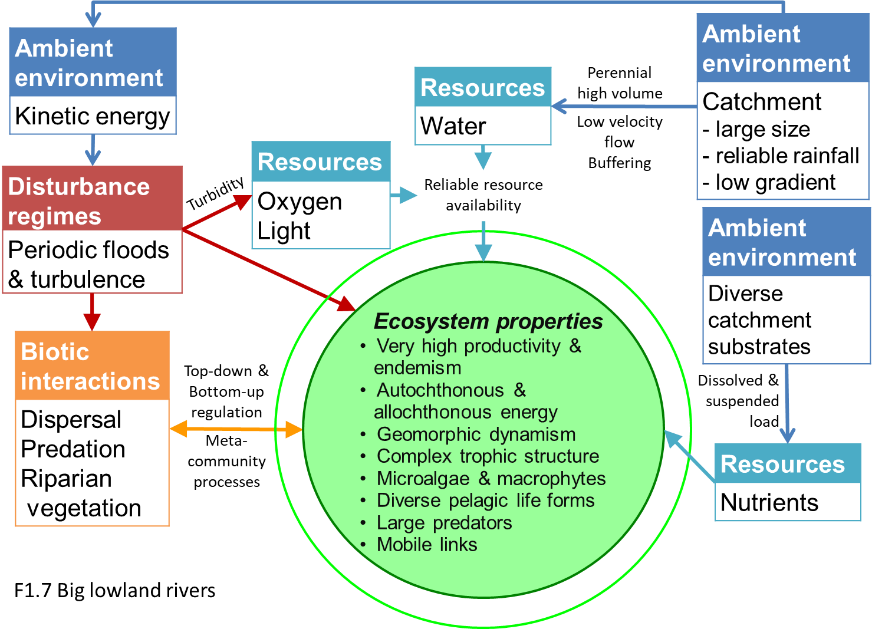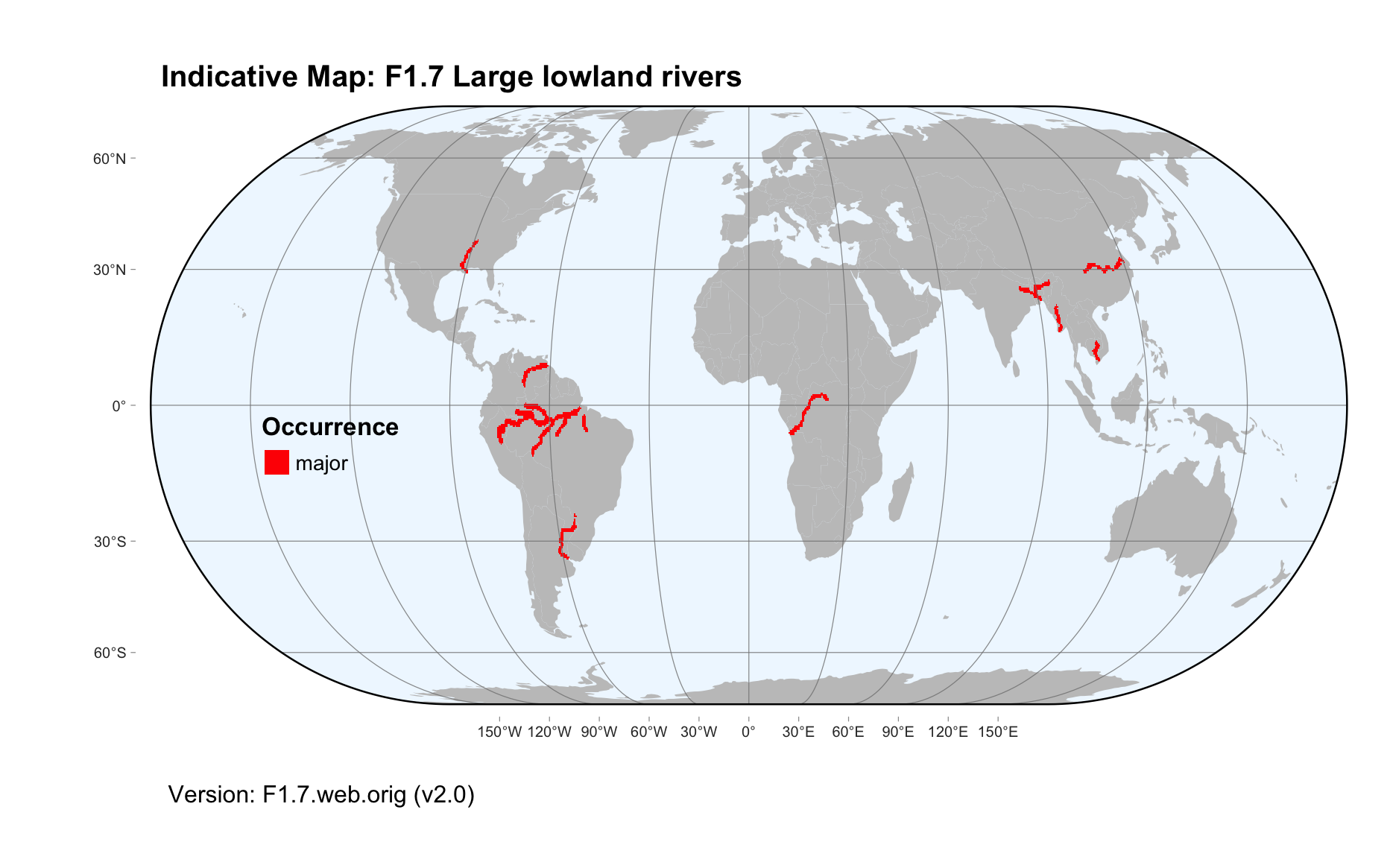Global ecosystem typology
Alternative site for the Global ecosystem typology with additional information for ecosystem profiles and indicative maps.
This site is maintained by jrfep
F1.7 Large lowland rivers
Biome: F1. Rivers and streams biome
Contributors:
(texts)
These very large rivers transport massive volumes of freshwater (>10,000m3/s) through flat lowlands, mostly in tropical or subtropical regions. Their very large flow volumes, diverse habitats and slow to moderate flows make them highly productive. High nutrient levels come from upstream catchments and floodplains, with additional productivity contributed by in-channel algae and aquatic plants. Their food webs are complex, with a high diversity of plants and animals, including large-bodied fish, reptiles and mammals.
Key Features
Large highly productive rivers with megaflow rates and complex food webs, reflecting the extent of habitat, connections with floodplains and available niches for plants, invertebrates and large vertebrates including aquatic mammals..
Overview of distribution
Tropical and subtropical lowlands, with some in temperate regions with large catchments topped by wet mountain ranges.
Profile versions
- v1.0 (2020-02-28): RT Kingsford; R Mac Nally; DA Keith
- v2.0 (2020-06-24): RT Kingsford; PS Giller; R Mac Nally; DA Keith
- v2.01 ():
- v2.1 (2022-04-06): RT Kingsford; PS Giller; R Mac Nally; DA Keith Full profile available at official site
Main references
Selected references for this functional group:
Best, J (2019) Anthropogenic stresses on the world’s big rivers Nature Geoscience 12,7-2 DOI:10.1038/s41561-018-0262-x
Ashworth, PJ, Lewin, J (2012) How do big rivers come to be different? Earth-Science Reviews 114, 84-107 DOI:10.1016/j.earscirev.2012.05.003
Diagrammatic assembly model

Maps
Maps are indicative of global distribution patterns are not intended to represent fine-scale patterns. The maps show areas of the world containing major (coloured red) or minor occurrences (coloured yellow) of each ecosystem functional group. See general notes on maps.
There are 2 alternative versions of the indicative map for this functional group, please compare description and sources below.
F1.7.IM.orig_v2.0
Datasets
- GloRIC-1.0
Map references
Ouellet Dallaire, C., Lehner, B., Sayre, R., Thieme, M. (2018): A multidisciplinary framework to derive global river reach classifications at high spatial resolution. Environmental Research Letters 14: 024003. DOI: 10.1088/1748-9326/aad8e9
F1.7.web.orig_v2.0

Datasets
- GloRIC-1.0
Map references
Ouellet Dallaire, C., Lehner, B., Sayre, R., Thieme, M. (2018): A multidisciplinary framework to derive global river reach classifications at high spatial resolution. Environmental Research Letters 14: 024003. DOI: 10.1088/1748-9326/aad8e9
Check: the Glossary / Profile structure / the public document